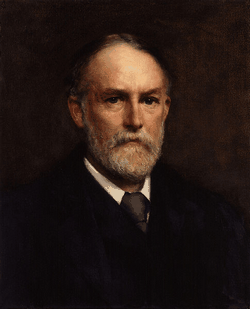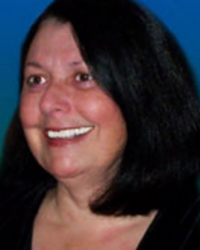A quick search of ‘Estelle Roberts’ online will reveal there is a definite separation between the ‘believers’ and ‘disbelievers’. The exuberance of Spiritualists and others express about Estelle Roberts and her accomplishments is matched only by the dismissiveness and contempt of the critics towards Estelle Roberts (and the entire field of ‘psychics’). To understand this divide between the ‘believers’ and the skeptics (and why this division continues today) one should look at history. Understanding the era through which Estelle Roberts lived is the best way to understand Estelle Roberts and why her story is important. Through the lens of history one can understand why the critics feel the way they do (and would much rather see Estelle’s entire history deleted) and why the Spiritualists and others with spiritual leanings view her as an important individual in a unique spiritual movement.
This is part 3 of a 4 part series of articles on Estella Roberts. To read previous article, go to Estella Roberts: The Early Years, and then, Life and Times of Estella Roberts
Often you will read or hear how Estelle Roberts did not accept testing by the Society of Psychical Research. That is true. You may also run across statements that she never allow any ‘scientists’ to participate in or witness her mediumship skills. This is largely untrue or at best too ambiguous to be called ‘truth’. To appreciate why Estelle turned down ‘testing’ by the Society of Psychical Research, one needs to understand the context, or history, of the time. Estelle Roberts considered herself a Spiritualist and largely worked within the Spiritualist framework to develop her mediumship skills … and Spiritualists and the Society of Psychical Research ultimately had an acrimonious separation …
Spiritualists and the Society of Psychical Research

Frederic William Henry Myers – Founder of Society of Psychical Research was also a Spiritualist and the author of Human Personality and Its Survival of Bodily Death
The primary interest of the Spiritualists in the SPR was to explore the possibility of survival after death. To the Spiritualists, proof of survival after death literally alters the conciseness of humanity in the same way as discovering the earth is round and not flat. It is hard to argue that this assessment is very true. Back in the late 1800s and into the early 1900s the SPR ran into problems that few could have foreseen. The rise of the ‘tricksters’. These tricksters would piggy-back on top of the Spiritualist movement and alter the image of Spiritualists for years.
Spiritualism was not so much a religion as a movement. There really was no set dogma or centralized authority. For Spiritualists, it was all about individualism and freedom. Anyone could call themselves a Spiritualist, or a psychic, or a medium. With the rise in popularity and interest in Spiritualism came increased ‘donations’. The original idea was to introduce the public to this new form of spirituality and offer demonstrations of what this new, alternative spirituality was all about. Unfortunately, it soon became appearent that big money could be made at demonstrations of mediumship and psychic abilities. Soon, seances and demonstrations of psychic abilities became more about showmanship and entertainment, the spiritual aspect became secondary, or was not addressed at all.
The magicians began to see the Spiritualists as interlopers, people putting on a magic shows under the guise of ‘spirituality’. Indeed, a number of so-called psychics would confess to using such trickery. So, the magicians began to try and duplicate (and through magic expand) the type of demonstrations and ‘shows’ that many well known Spiritualist mediums would provide. See the article Are Psychics Mentalists? for more information. Whether performed by mentalists, or people posing as psychics to make money, or ill advised Spiritualists trying to advance their cause, it was all trickery. And, the tricksters were very good at their crafts.
The circus had come to town in a new, rebranded form of ‘Spiritualism’ and/or Mentalism. True Spiritualists were appalled, no doubt. Spiritualist members of the SPR had no problem with researching and discrediting such individuals using deception. The Society for Psychical Research got caught up in this circus when some investigators, members or researchers got fooled and seemed to endorse this or that medium only to find out they’d been hoaxed. To deceive the SPR into thinking you could produce paranormal phenomena was a badge of honor for the magicians/mentalists/illusionists. For fraudulent psychic mediums operating under the guise of spiritualist, it was a way to boost their credibility and income if they could be ‘endorsed’ by the SPR.
Once it became public that the SPR had been fooled by this or that ‘psychic’ or magician, the Society started to lose credibility with the public and general scientific community. To counter this and regain respectability, the SPR banked hard right and went the other direction. The SPR began to bring in to it’s membership mentalists and psychics who’d used fraud in order to assist in investigating and researching ‘psychics’ and ‘mediums’. In the eyes of the Spiritualists what was happening was an old fashion witch hunt. It was no longer about impartial investigation into survival after death so much as proving all psychic mediums were frauds so the organization could maintain it’s credibility with the scientific community and the public in general.
Many who called themselves Spiritualist endured this shift in the SPR toward debunking all psychics, but when the SPR took the position that ‘clairvoyance’ was really a form of telepathy, that pretty much did it. The SPR was taking the position there was no such thing as life after death. Sir Arthur Conan Doyle, a noted member of the Society for Psychical Research, lead a mass resignation of Spiritualists from the membership of the SPR. If there was going to be no honest, impartial investigation of the possibility of life after death, then the grand dream of the Spiritualists to work with others on this issue was over. Worse, much of the research and work of the SPR seemed to brand the whole Spiritualist movement as fraudulent, which the critics and skeptics of the movement embraced with glee.
However, to SPR’s credit, the Society never fully took the position that all psychic phenomina was fraudulent nor that Spiritualism itself was inherently misguided. Careful reading shows that although an enormous amount of fraud many have developed around spiritualism, there were, and are, a number mysterious phenomena produced by some indivduals which the Society was unable to explain. It is also to the Society for Psychical Research’s credit that they were able to weather all the controversy and continue to do research today.
Spiritualists began to largely withdraw from public view. Rather than being a movement, Spiritualists sought status as a religion, and, in the privacy of their churches or in private gathers, continued to develop their mediumship skills and share insights about psychic abilities. Spiritualists would (and still do) welcome people to participate in medium demonstrations and learn about their religion. But, they are no longer interested in proving to others their reality of survival after death.
When looked at historically, it makes sense why Estelle Roberts would not accept the offer from the Society of Psychical Research. She considered herself a Spiritualist and Spiritualists knew the history SPR. They they were once founding members and most made a choice to no longer associate with the organization. Then, and now, Spiritualists do not want to involve themselves with so called ‘psychic investigators’. One might say they had "been there, done that". Older Spiritualists no doubt tell younger Spiritualist that in the past so-called ‘debunkers’ and ‘investigators’ threw bricks through parlor windows to disrupt seances; released rats or mice at large psychic demonstrations hoping to disrupt mediums; or pretended to be interested in attending a seance only to blow sneezing powder into the gathering; all of this in hopes of exposing a medium or psychic who might be acting fraudulently.
What Estelle Roberts opted to do was stay out of the circus that once erupted around Spiritualists and attended to those who had a legitimate interest in what her mediumship, and what her medium skills could produce in terms of information about those who had passed on. You might say Estelle took a different path – "Whoever has ears to hear, let them hear.". Believers, disbelievers, critics, skeptics, Estelle would meet with all. Occasionally you will run across references that Estelle Roberts would not meet with scientists. What exactly constitutes a ‘scientist’? Sir Arthur Conan Doyle was a published medical doctor, which would seem to qualify as in the scientific field. In truth, Estelle met with numerous professionals and those in a number of scientific fields including doctors, anthropologists, geographers and others.
One last note: It appears that the SPR wanted to ‘test’ Estelle Roberts ‘physical mediumship’ which involved a variety of physical manifestations from table tipping to actual spirit manifestations. This had been a area of massive fraud in the past. However, the SPR didn’t seem to directly challenge Estelle Roberts clairvoyance. The possible reason being that the SPR recognized clairvoyance as real, but considered a form of telepathy.
Telepathy has never been accepted as ‘real’ within main stream science. So here we have a circumstance where Estelle is criticized for not being tested by an organization (which is suppose to be ‘scientific’) that holds views that are clearly unscientific. In view of this it seems ironic to criticize her for wishing not to be involved with Society for Psychical Research. Still, one wonders what such testing would have produced.This article a part of a 4 article series on Estella Roberts:
Estella Roberts: The Early Years
Life and Times of Estella Roberts
Estella Roberts: Critics and Skeptics, Part 1
Estella Roberts: Critics and Skeptics, Part 2
Should you be interested in speaking with a professional clairvoyant, give Psychic Alex a call at 1-866-327-9032. You might also like to check out 1800 Spirit Guides where you can reach profession clairavoyants, clairaudients and other spirit mediums 24/7. You can also call 1-800-340-8374 (toll free USA and Canada) and they will offer free assistance in finding the perfect reader for your questions.
Interesting Resources:
Fifty Years a Medium
Fifty Years a Medium – PDF Download
Estelle Roberts – Physical Medium
Society of Psychical Research – Background
SPR – Wikipedia
Spiritualism – Wikipedia
Human Personality and Its Survival of Bodily Death, 1903 – Founder of SCR

